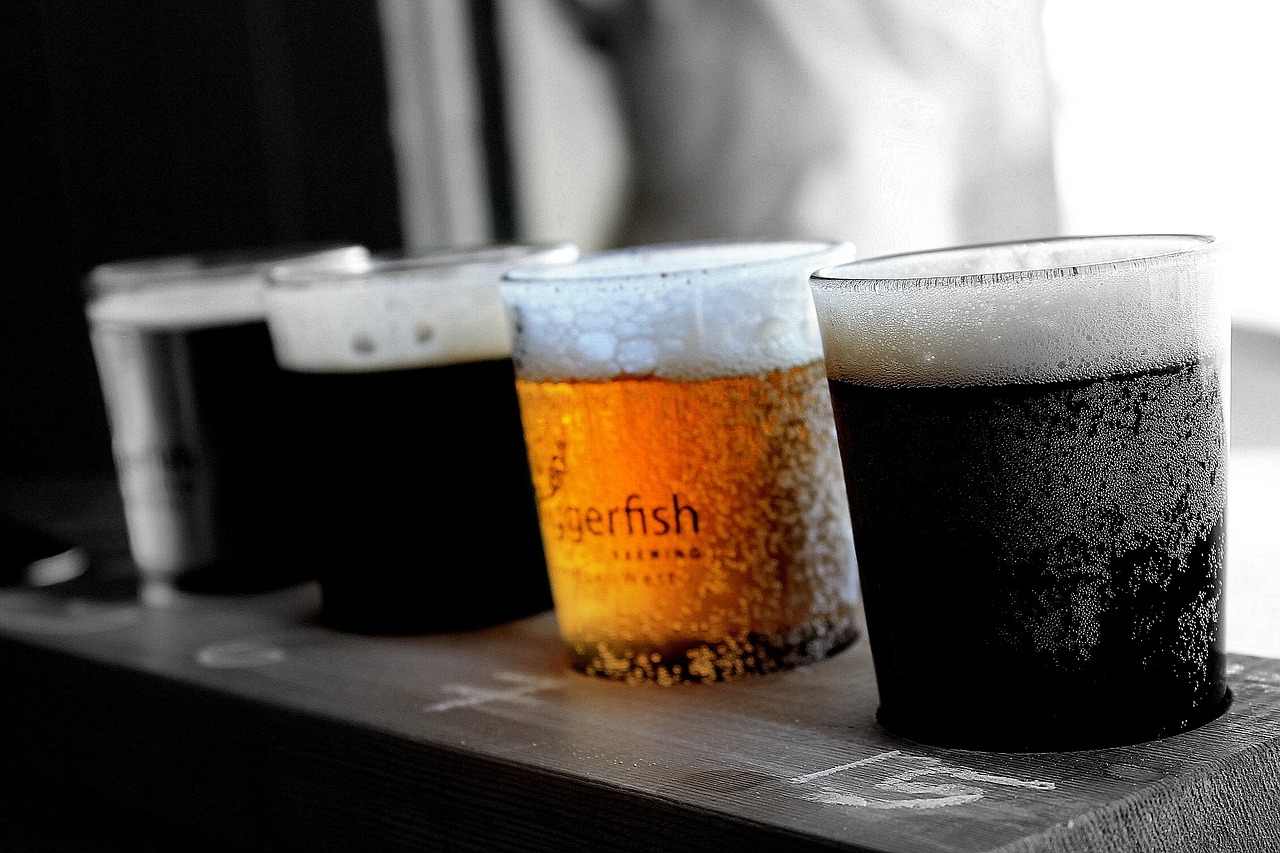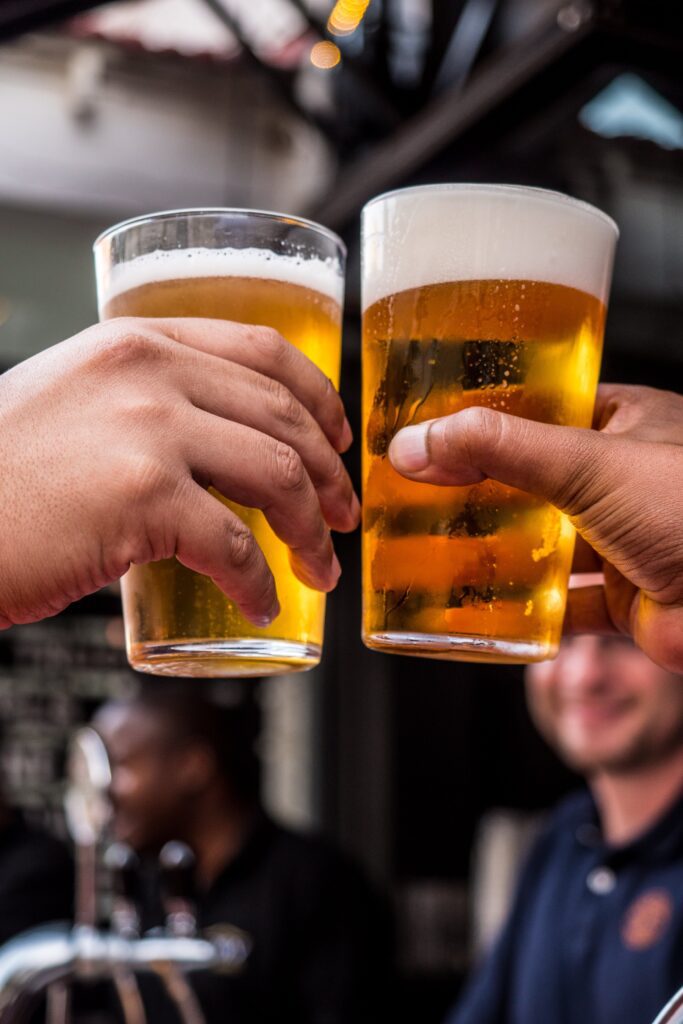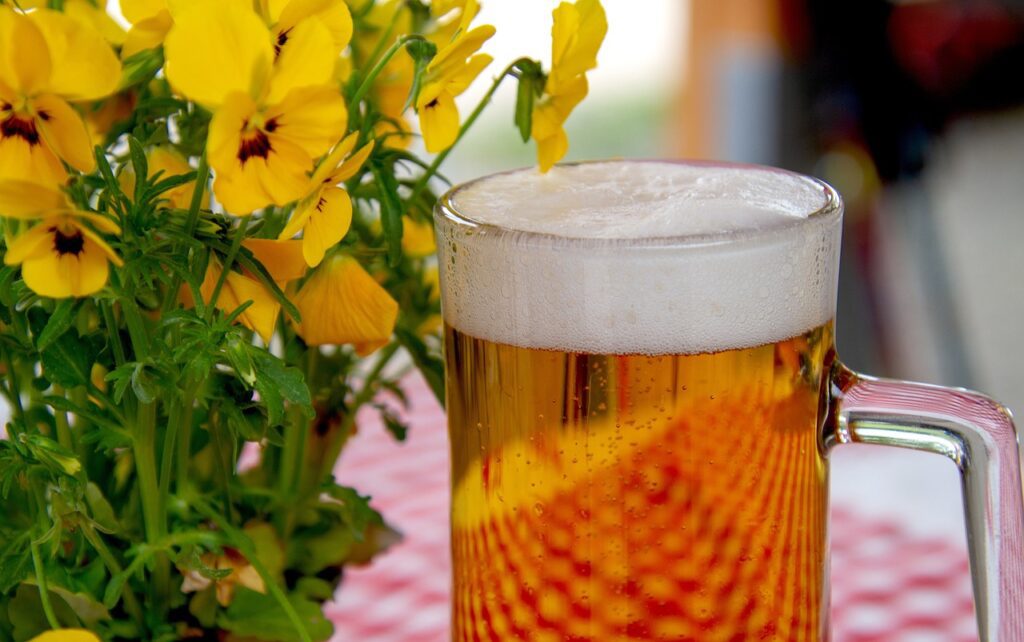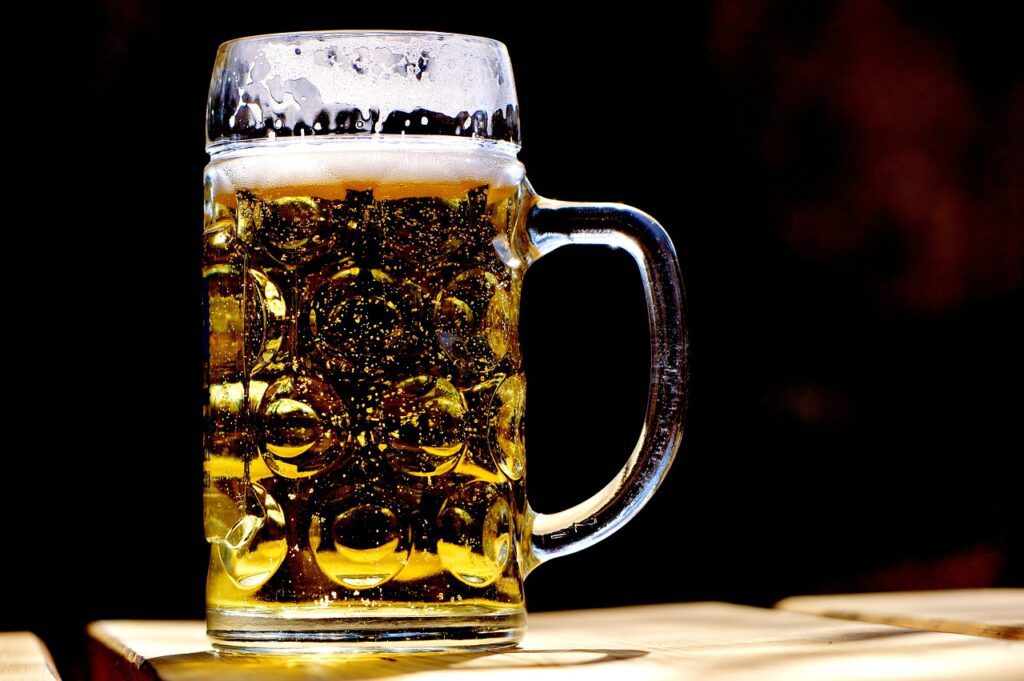How Many Ounces in a Can of Beer? Introduction
Overview of standard beer can sizes and their importance
Beer lovers understand that the size of the beer can plays a significant role in their drinking experience. It not only affects the quantity of beer they can enjoy but also the convenience and portability. Different occasions call for different sizes, and each preference has its own popular can size. Understanding the standard sizes of beer cans in ounces is crucial for every beer enthusiast, ensuring they have an option that suits their needs.
Beer by the can
There are four popular types of beer can sizes:
- 4-ounce can: Also known as the nip can, this size is designed to be compact and transportable. It is perfect for those who want a quick drink or prefer smaller servings.
- 12-ounce can: The standard serving size for a beer, the 12-ounce can is the most common option available. Beer makers usually offer them in pack sizes of 6, 12, 15, 18, 24, and 30, making it easy to purchase based on individual preferences and quantity needed.
- 16-ounce can: Also known as the pint can, this size is ideal for those looking for a more generous pour. It offers a larger serving without the need for refills, making it popular among beer enthusiasts at events or parties.
- 32-ounce can: Sometimes referred to as the crowler can, this larger size is perfect for sharing or for those who want an extended drinking experience. It is commonly found in specialty breweries or taprooms.
In conclusion, understanding the standard sizes of beer cans in ounces is essential for every beer enthusiast. Each size caters to different preferences and occasions, ensuring an option for everyone, from those seeking a modest sip to those looking for a generous pour. Whether it’s a compact 4-ounce nip can or a 32-ounce crowler can, beer lovers have plenty of choices to suit their needs. So next time you grab a beer, consider the size of the can and elevate your drinking experience.
12-Ounce Can
The standard serving size for beer
The 12-ounce can is the most common and widely recognized size for a beer. It has been a staple in the beer business for a long time. This size is considered the standard serving size for a single beer. It provides a reasonable quantity for an individual to enjoy without feeling overwhelmed or needing multiple servings.
Pack sizes and availability
Beer makers typically offer 12-ounce cans in various pack sizes to cater to different needs. These pack sizes include 6, 12, 15, 18, 24, and 30 cans per pack. This wide range of options allows consumers to choose based on their preferences, budget, and the quantity of beer they require. Whether it’s a small pack for personal consumption or a larger pack for gatherings or parties, there is a suitable option available.
The 12-ounce cans are easily accessible and can be found in most grocery stores, liquor stores, and convenience stores. They are generally sold in packs, making it convenient for consumers to stock up on their favorite beer. The popularity and widespread availability of the 12-ounce can make it a go-to choice for many beer drinkers.
Comparing different can sizes
When comparing the 12-ounce can to other popular beer can sizes, there are a few factors to consider:
| Can Size | Pros | Cons |
|---|---|---|
| 12-Ounce Can | – Standard serving size – Widely available – Various pack sizes |
– May not be sufficient for those looking for a larger pour – Limited to individual consumption |
| 8.4-Ounce Can (Nip Can) | – Compact and portable – Quick drinking option | – Limited quantity – Not suitable for sharing or longer drinking experiences |
| 16-Ounce Can (Pint Can) | – Larger serving size – Preferred at events or parties – Less need for refills | – Not as widely available as 12-ounce cans – May feel too large for individuals seeking a moderate quantity |
| 32-Ounce Can (Crowler Can) | – Great for sharing – Extended drinking experience | – Less common and harder to find – Limited to specialty breweries or taprooms |
In conclusion, the 12-ounce can is the standard serving size for beer and is widely available in various pack sizes. It offers convenience and flexibility for individual consumption. While other can sizes may have their advantages, such as portability or larger servings, the 12-ounce can remains a popular choice due to its familiarity, accessibility, and suitability for most drinking occasions.

16-Ounce Can
Increasing popularity of 16-ounce cans
The 16-ounce can has been gaining popularity among beer enthusiasts in recent years. Many breweries have recognized the potential of this size to create visually appealing and distinctive packaging that stands out on store shelves. The versatility of the 16-ounce can has also contributed to its appeal. It is suitable for various beer types, ranging from IPAs and pale beers to stouts and ales. This flexibility has attracted consumers who are looking for more variety in their beer choices. Additionally, the 16-ounce can offers a larger serving size than the standard 12-ounce can, catering to different preferences and occasions.
Advantages and drawbacks
When comparing the 16-ounce can to other popular beer can sizes, there are several factors to consider:
- Advantages of the 16-Ounce Can:
- Larger serving size: The 16-ounce can provides beer drinkers with a more substantial pour, making it a preferred choice at events or parties.
- Preferred for events or parties: The larger size of the 16-ounce can means less need for refills, making it a convenient option for social gatherings.
- Drawbacks of the 16-Ounce Can:
- Limited availability: While the 12-ounce can is widely accessible, the 16-ounce can may not be as readily available in all stores.
- May feel too large for individuals seeking a moderate quantity: Some beer enthusiasts may find the 16-ounce can to be too large if they prefer a more moderate serving size.
Overall, the 16-ounce can offers a larger serving size and is suitable for various beer types. However, it may not be as widely available as the standard 12-ounce can, and some individuals may find it too large for their preferences. Despite these drawbacks, the 16-ounce can remains a popular choice among beer drinkers who want a bigger pour and more variety in their beer choices.
24-Ounce Can
Larger size and serving options
The 24-ounce can is another popular size among beer drinkers. With a larger capacity than the standard 12-ounce can, the 24-ounce can provides beer enthusiasts with an even more substantial serving size. This makes it a preferred option for individuals who enjoy a more significant portion of beer or for those who want to share with friends.
The larger size of the 24-ounce can allows for a more generous pour, making it ideal for gatherings, parties, and events. It reduces the need for frequent refills, providing convenience and enjoyment for social occasions. Additionally, the 24-ounce can is often chosen by those who prefer a more immersive beer-drinking experience.
Common uses and availability
While the 12-ounce can is the standard serving size and widely available, the 24-ounce can may not be as easily found in all stores. However, it is commonly offered by many beer makers and can often be found in liquor stores, specialty beer shops, and some supermarkets. The larger size of this can is well-suited for craft beers or limited-edition brews, which are typically packaged in unique and eye-catching designs.
Although the 24-ounce can is not as prevalent as the 12-ounce can, its popularity continues to grow among beer enthusiasts. Its larger serving size and ability to accommodate a wider variety of beer types make it a favored choice. If you enjoy savoring a larger portion of beer or sharing a can with friends, the 24-ounce option provides an excellent drinking experience. However, keep in mind that availability may vary depending on your location and the specific brand or type of beer you prefer.

32-Ounce Can
A popular choice among craft beer enthusiasts
The 32-ounce can, also known as the “Crowler,” has gained popularity among craft beer enthusiasts. Craft breweries often use this larger can size to offer their customers a convenient way to take home their favorite brews straight from the tap.
Benefits of larger volume
The 32-ounce can provides several benefits for beer drinkers. With twice the volume of a standard 16-ounce pint, it allows for a more substantial serving size. This is especially appealing for those who want to savor their favorite craft beers without the need for frequent refills.
The larger volume also means that the beer will stay colder for longer, as the can’s insulation helps maintain the desired temperature. This makes it an excellent choice for outdoor events, picnics, and other occasions where keeping your beverage cold is a priority.
Additionally, the 32-ounce can is often more cost-effective than purchasing multiple smaller cans or bottles. It provides a convenient option for sharing a drink with a friend or enjoying a longer drinking session without having to open multiple containers.
While the 32-ounce can may not be as widely available as the standard 12-ounce or even the 24-ounce cans, it can often be found at craft breweries and specialty beer stores. Some breweries even offer the option to have their beers canned in this size upon request.
In conclusion, the 32-ounce can is a popular choice among craft beer enthusiasts. Its larger volume and benefits such as better insulation and cost-effectiveness make it a favored option for enjoying craft beers and sharing with others. Although availability may vary, seeking out local craft breweries or specialty beer shops is a good way to find this larger can size and expand your beer-drinking experience.
8-Ounce Can
Smaller size options for different occasions
The 8-ounce can, also known as the “nip can,” offers a smaller serving size compared to the standard 12-ounce can. This size is perfect for those who prefer a more modest sip of beer or for occasions where a smaller amount is desired.
The compact and transportable nature of the 8-ounce can makes it ideal for outdoor activities like camping, hiking, or picnics. Its smaller size also allows for easy consumption without the worry of having to finish a larger volume of beer.
Additionally, the 8-ounce can is often used in beer sampling packs or tasting events. This size allows for a variety of beers to be sampled without consuming an excessive amount of each one. It provides an opportunity to explore different flavors and styles without committing to a full-sized can or bottle.
Use in sampling packs and tasting events
Many breweries and beer vendors offer multi-packs or variety packs that include 8-ounce cans. These packs often feature a selection of different beers, allowing consumers to try a range of flavors and styles. It’s a great way for beer enthusiasts to expand their palate and discover new favorites.
The 8-ounce can is also a popular choice for tasting events or beer festivals. Brewers can showcase their creations in smaller portions, allowing attendees to sample a wide variety of beers without becoming overwhelmed by larger quantities. This size encourages exploration and experimentation, inviting individuals to appreciate the nuances and complexities of different brews.
Overall, the 8-ounce can provides a smaller size option for different occasions. Its convenient portability and suitability for sampling packs and tasting events make it a versatile choice. Whether you prefer a more modest sip or want to explore a range of flavors, the 8-ounce can offers a satisfying and enjoyable beer drinking experience.

19.2-Ounce Can
Unique oversized can option
The 19.2-ounce can, commonly referred to as the “stovepipe,” offers a unique oversized option for beer enthusiasts. This larger size is perfect for those who prefer a generous pour or for occasions where a larger serving is desired.
The 19.2-ounce can provides an elevated beer-drinking experience, allowing for a more immersive and satisfying sip. Its larger volume ensures that each sip delivers a substantial amount of beer, making it a great choice for those who want to fully indulge in their favorite brew.
In addition to its larger size, the 19.2-ounce can also stands out with its distinctive shape. Its tall and slender design gives it a sleek and eye-catching appearance, making it visually appealing to beer consumers. This unique can option adds an element of novelty and sophistication to the drinking experience.
Origin and appeal
The origin of the 19.2-ounce can can be traced back to the craft beer movement. Craft breweries, known for their innovation and creativity, introduced this larger can size as a way to differentiate themselves and offer a premium drinking experience.
The appeal of the 19.2-ounce can lies in its ability to provide beer lovers with a more substantial serving without the need for a glass or additional pour. It offers convenience and portability, making it ideal for outdoor gatherings, BBQs, or social events where a larger serving is desired.
The 19.2-ounce can is often chosen by beer enthusiasts who want to savor every sip and fully appreciate the flavors and aromas of their beverage. It allows for a longer and more enjoyable drinking experience, without the need for frequent refills.
In conclusion, the 19.2-ounce can offers a unique oversized option for beer lovers looking for a generous and immersive drinking experience. Its larger size and distinctive appearance make it a standout choice, providing a visually appealing and satisfying beer-drinking experience.
Specialty Can Sizes
Exploration of less common beer can sizes (10 oz, 14 oz)
In addition to the standard sizes mentioned earlier, there are also some less common beer can sizes that cater to specific preferences and occasions. These specialty can sizes provide unique options for beer enthusiasts seeking a different drinking experience.
| Can Size | Volume (in ounces) | Features |
|---|---|---|
| 10 oz | 10 | Smaller serving option |
| 14 oz | 14 | Mid-range serving size |
The 10-ounce can offers a smaller serving option for those who prefer a more modest sip. This size is great for those looking to enjoy their favorite beer without consuming too much in one sitting. It is also popular among those who want to sample different beers without committing to a full-size can or bottle.
On the other hand, the 14-ounce can provides a mid-range serving size that offers a balance between a smaller portion and a more generous pour. It caters to those who want a bit more beer than what the standard 12-ounce can offers, without going all the way to the larger sizes.
Catering to different preferences and occasions
Understanding the various beer can sizes is important because it allows beer enthusiasts to choose the right option for different preferences and occasions. Whether you prefer a smaller serving to savor the flavors or a larger can for a more immersive experience, there is a size that will suit your needs.
The specialty can sizes like the 10-ounce and 14-ounce cans cater to specific preferences, providing options for those who want a smaller or mid-range serving. They are great for casual gatherings, picnics, or when you want to sample multiple beers without consuming too much in one sitting.
In conclusion, the standard sizes of beer cans, along with the specialty options like the 10-ounce and 14-ounce cans, cater to different preferences and occasions. They ensure that there is a beer can size for everyone, allowing beer enthusiasts to enjoy their favorite brew in a way that best suits their drinking style and needs.

Conclusion
In conclusion, understanding the standard sizes of beer cans in ounces is essential for every beer enthusiast. Each size caters to different preferences and occasions, ensuring an option for everyone from those seeking a modest sip to those looking for a generous pour.
How Many Ounces in a Can of Beer: Exploring Standard Beer Can Sizes
Q: How many ounces are typically in a can of beer?
A: The most common size for a standard beer can is 12 ounces (355 milliliters). This is the standard size you’ll find for most commercially available beers.
Q: Are there other sizes of beer cans?
A: Yes, apart from the standard 12-ounce can, there are a few other sizes that you may come across. It’s worth noting that these sizes are not as common as the 12-ounce can. Some examples include:
- Tallboy: A tallboy can holds 16 ounces (473 milliliters) of beer. It is slightly taller and wider than a standard can.
- Pounder: A pounder can contains 16 ounces (473 milliliters) of beer as well. It is shorter and wider than a tallboy can, giving it a sturdy appearance.
- Crowler: A crowler can is a large aluminum can typically used for take-out beer from breweries and taprooms. It often holds 32 ounces (946 milliliters) or 25.4 ounces (750 milliliters) of beer, but the size may vary depending on the establishment.
Q: Why are 12-ounce cans the most common size?
A: The 12-ounce can has become the industry standard for several reasons. Firstly, the size is considered to be a good balance between affordability, convenience, and moderation. It allows beer drinkers to enjoy a single serving without the risk of it getting warm or stale before it’s finished. Additionally, the 12-ounce size is optimal for mass production and distribution, making it cost-effective for breweries.
Q: Are there any other factors to consider regarding beer can sizes?
A: Yes, it’s important to note that the standard sizes listed above are subject to regional variations and cultural preferences. Certain countries may have different popular sizes, such as 330 milliliters or 500 milliliters. Additionally, craft breweries often experiment with unique can sizes for special releases or limited editions, which can range anywhere from 8 to 19.2 ounces (237 to 568 milliliters) or more.
Q: Can I find beer in non-standard sizes?
A: Yes, you may encounter unusual or novelty sizes of beer cans on occasion. These can include mini cans, typically holding around 7 ounces (207 milliliters) and often used for promotional purposes or sampler packs. You may also come across oversized cans, ranging from 24 to 25.4 ounces (710 to 750 milliliters), which are sometimes marketed as “king cans” or “extra large” options.
In conclusion, while 12-ounce cans are the most common size for beer, there are other sizes like tallboys, pounders, and crowlers that you might come across. Remember, beer can sizes can vary depending on the region, cultural preferences, and the creativity of craft breweries.

We are introducing Alberto Wilson, the content owner at South Avenue Bar! 🍹🍻Join us at South Avenue Bar, a modern establishment boasting an impressive cocktail menu and a vibrant atmosphere. For those who prefer a classic brew, we also offer a delightful selection of draft beers, poured just right to ensure a perfect pint every time.
Immerse yourself in the rhythms of Latin music during our weekly Latino night, where you can sip on refreshing margaritas and mojitos while enjoying the vibrant beats. Indulge in our delectable Greek tapas, featuring mouthwatering olives and other delightful small bites that perfectly complement your drink of choice.
Whether you’re seeking an exquisite cocktail experience or a laid-back evening with your favorite beer, South Avenue Bar, under the guidance of Alberto Wilson, promises a memorable and delicious journey through the world of libations. Come and join us today! 🍸🎉
